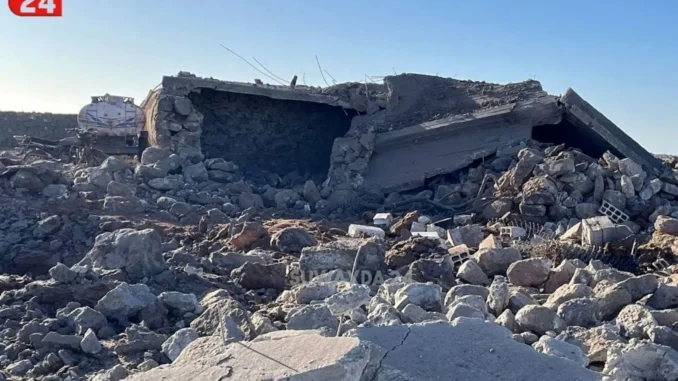By Jonathan Schanzer and Natalie Ecanow, NY POST 22 January 2024
Secretary of State Antony Blinken toured the Middle East this month in an effort to prevent a wider regional war.
But while Blinken was there, Jordanian jet fighters struck Iran-backed militias and narco-traffickers in Syria.
Jordan’s narco-battles have received scant attention but are part and parcel of Iran’s multifront offensive against the United States and its allies across the region.
Iran-backed Hamas provoked the war with Israel, while Iran-backed Hezbollah attacks Israel daily from across the Lebanese border.
The Iran-backed Houthis are striking ships in the Red Sea.
And Iran-backed militias in Iraq and Syria have attacked American bases there more than 130 times since mid-October.
The lure of immense profits drives the drug trade, but Iran and its proxies also sense an opportunity to destabilize Jordan, a country that serves a vital role — geographically and politically — in sustaining a regional order favorable to US interests.
By infiltrating Jordan with large hauls of the amphetamine-like drug captagon — whose trade was estimated in 2021 at $5.7 billion and has only grown since — as well as explosives and other arms, the narco-traffickers pursue both objectives.

A building destroyed in a suspected Jordanian airstrike in Sweida, Syria on Jan. 18, 2024/Suwayda 24 via REUTERS
Jordanian troops have been clashing regularly with smugglers at the Syrian border for more than two years.
Amman is now escalating its campaign by taking military action inside Syrian territory.
Already this year, Jordan’s air force has launched a half-dozen strikes north of the border.
Jordanian planes struck warehouses and the suspected home of a drug dealer Jan. 4 in the Syrian villages of Al-Ghariya and Shaab, respectively.
Jordan carried out four more strikes in enemy territory Jan. 9, targeting three dealers and a farm in villages near the border.
The operation “resulted in the arrest of seven wanted persons in connection with smuggling gangs and drug dealers,” according to the Jordanian army.
Another set of strikes hit Syria Thursday, killing at least nine.
Amman is under no illusions about who it’s fighting in this war: the Islamic Republic of Iran.
Former Jordanian minister Samih Maayteh said so explicitly, after dozens of narco-traffickers attempted to infiltrate Jordan Dec. 18 with explosives and 5 million captagon pills.
“It’s Iran sponsoring these militias,” Maayteh said. “These are hostile military actions against Jordan on its territory.”
The Syrian regime of Bashar al-Assad, a loyal client of Tehran, also plays an integral role in the captagon trade, along with Hezbollah.
The US Treasury Department noted last year that Assad and his allies “have increasingly embraced the production and trafficking of captagon to generate hard currency.”
Central to the business is the Syrian army’s Fourth Armored Division, commanded by the dictator’s younger brother, Maher al-Assad.
Hezbollah facilitates and profits from trafficking operations — its members are reportedly supervising a new captagon factory in eastern Syria that Iran’s Islamic Revolutionary Guard Corps helped establish in December.
For a time, Jordan was mainly a transit point for captagon, which fetches a higher price in wealthy countries like Saudi Arabia.
But Jordan is now a market for captagon, too, albeit less lucrative — the price of a pill in Amman is still many times greater than its cost to producers in Syria or Lebanon.
Last February and March, Jordan’s King Abdullah II asked the Biden administration for help in its narco-war.
Washington should respond affirmatively.
But as Washington backs Jordan against Iranian threats in Syria, Amman must be made to understand that its harsh rhetoric against Israel is undermining its own cause.
King Abdullah said in October that Israel’s defensive campaign against Hamas is “cruel and unconscionable” and accused Israel of committing “war crimes” in its fight against the terrorists.
Whether Abdullah likes it or not, Israel and Jordan are fighting the same war.
It’s a war Washington is also fighting against the Houthis.
It’s a war against Tehran’s self-appointed “axis of resistance.”
The sooner every government facing an Iran-backed threat grasps this common thread, the sooner a wider strategy can begin to take shape.
Jonathan Schanzer is senior vice president for research at the Foundation for Defense of Democracies, where Natalie Ecanow is a research analyst.
Twitter: @JSchanzer and @NatalieEcanow



Leave a Reply
You must be logged in to post a comment.